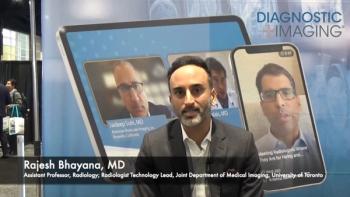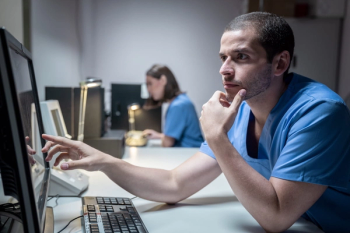
Vertebroplasty data hint at negative effect on patient survival
Preliminary results from a Mayo Clinic study suggest that patients who undergo vertebroplasty may die sooner than patients with vertebral fractures who do not undergo the procedure.
Preliminary results from a Mayo Clinic study suggest that patients who undergo vertebroplasty may die sooner than patients with vertebral fractures who do not undergo the procedure.
Vertebroplasty has long been validated as a safe and effective treatment for patients with vertebral compression fractures from osteoporosis. Elderly patients, in particular, experience pain reduction and improved mobility. It remains unclear, however, whether the image-guided interventional procedure has a beneficial effect on survival.
An investigative team led by Dr. David F. Kallmes, a professor of radiology at the Mayo Clinic in Rochester, MN, sought to answer this lingering question. Kallmes and colleagues compared survival rates of patients treated for vertebral fractures with vertebroplasty with those who had not undergone the procedure. The investigators were bewildered when the preliminary analysis of the data showed that vertebroplasty recipients had a significantly reduced life expectancy when compared with untreated patients.
"After seeing these results, it doesn't make any sense to us," said coauthor Dr. Robert J. McDonald from Mayo's Medical Scientist Training Program.
McDonald released the preliminary findings at the 2008 RSNA meeting in Chicago.
The investigators tracked survival and clinical outcomes, including pain, pre- and postoperative mobility, and drug use, in a study group of 518 patients with osteoporotic vertebral compression fractures treated with vertebroplasty. Using statistical models, the researchers compared this group's survival with that of 560 patients with similar lesions but without treatment. They found that 27% of the treated patients died within 2.2 years after fracture diagnosis compared with 9.4% of the untreated patients within 9.7 years of diagnosis.
The difference was statistically significant (p<0.0001).
McDonald noted that age and gender differences could account for some of the difference. Patients in the treated group were older (mean age 75 versus 68) and included more women. There were also significant differences in follow-up times between the two groups.
The project is still a work-in-progress, and interpretation of results may change when the researchers complete the analysis in the next few months. They are concerned that people may come to the wrong conclusions, such as that vertebroplasty is dangerous and should not be performed, McDonald said.
"Patient safety is our number one priority. But until we can confirm our results, they may not accurately reflect the impact vertebroplasty has on survival, if any," McDonald said.
For more information from the Diagnostic Imaging archives:
Newsletter
Stay at the forefront of radiology with the Diagnostic Imaging newsletter, delivering the latest news, clinical insights, and imaging advancements for today’s radiologists.




























